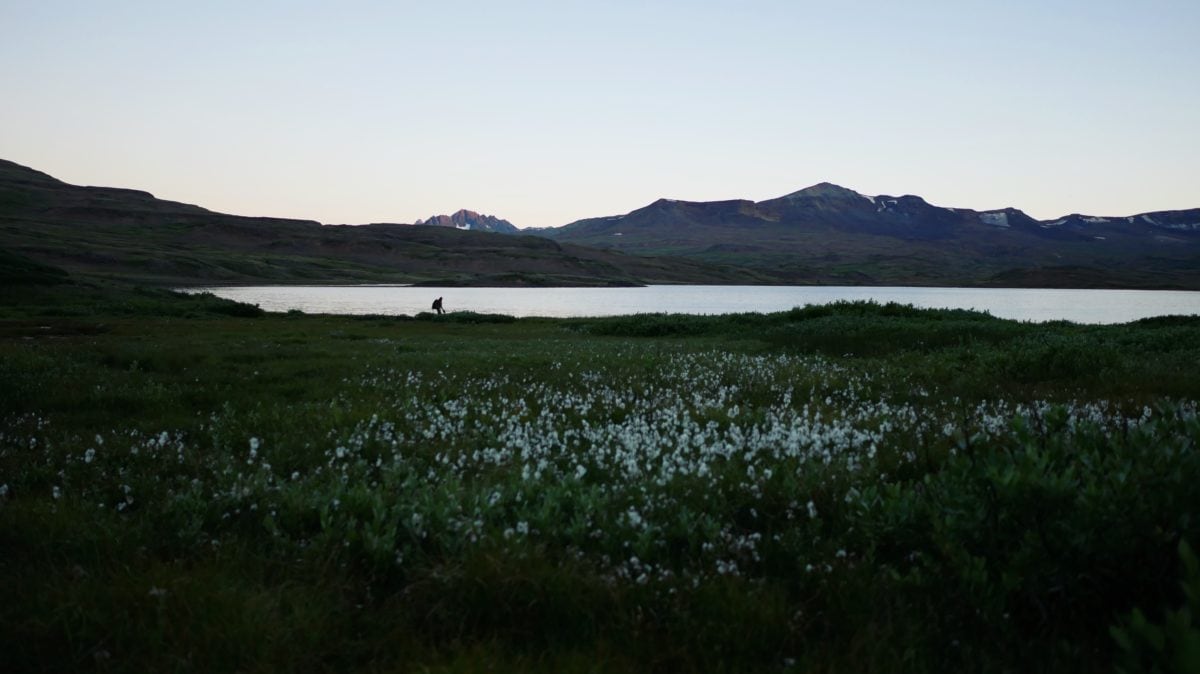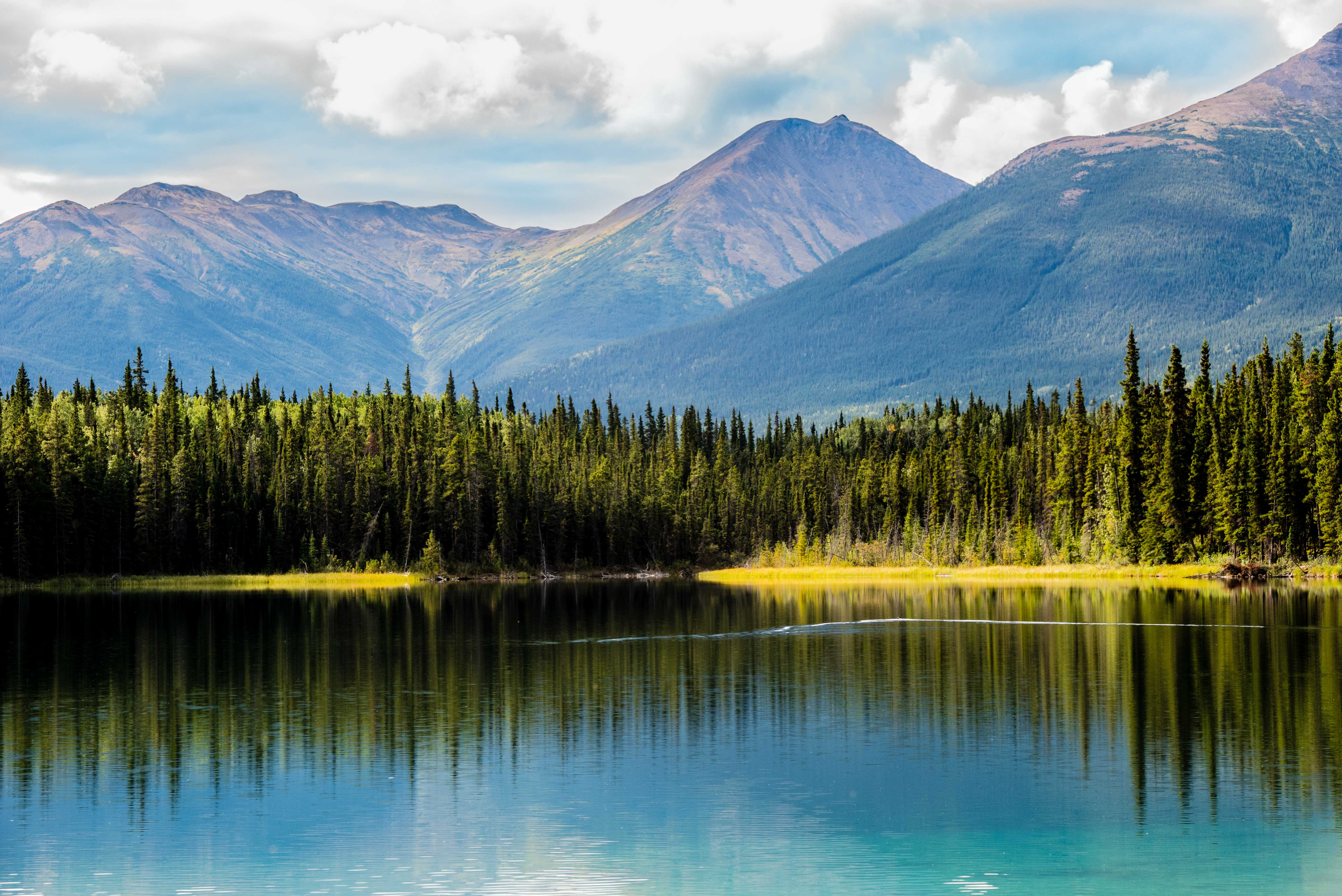The Narwhal
August 19, 2019 | Sarah Cox
Twenty-seven initiatives to create new Indigenous protected and conserved areas are among the projects set to receive unprecedented federal funds as Canada strives to meet 2020 biodiversity targets
Indigenous-led initiatives in Clayoquot Sound and the Sacred Headwaters region are among 68 conservation projects across Canada to receive $175 million in new federal funding, Environment Minister Catherine McKenna announced in Victoria on Monday at an oceanside event crashed by a dozen shouting protesters.
McKenna also announced an additional $4.3 million for 49 projects to protect species at risk of extinction, including a project in the district of Oak Bay to support the recovery of 14 at-risk plant species in Uplands Park, such as the rare bearded owl-clover and water-plantain buttercup.
“We have a biodiversity crisis and we’re losing species — animals, nature, plants,” McKenna told reporters, local politicians and dignitaries who included former long-time federal environment minister David Anderson.
The minister said 67 conservation projects — including 27 initiatives to create new Indigenous protected and conserved areas — will be supported through the Canada Nature Fund, which aims to expand the country’s connected and protected areas as part of the Trudeau government’s pledge to double the amount of nature that Canada protects.
An additional project, to protect land and water in Clayoquot Sound on the west coast of Vancouver Island, will be funded through Canada’s Natural Heritage Conservation Program.
The nature fund and heritage conservation program are part of Canada’s $1.35 billion Nature Legacy initiative, launched last year to help meet commitments under the UN Convention on Biological Diversity, which aims to reverse the global destruction of nature and biodiversity loss.
The Nature Legacy initiative represents the single largest government investment in nature conservation in Canada’s history.
Canada and other nations agreed to accelerate biodiversity commitments in 2018, committing to protect at least 17 per cent of terrestrial areas and inland water and 10 per cent of coastal and marine areas by 2020 through networks of protected areas and other conservation measures.
Tahltan aim to protect areas with salmon, caribou
McKenna said the funding includes $3.9 million for the Tahltan Central Government in northwest B.C. “to advance environmental stewardship and protection” through land-use planning and the identification of conservation opportunities.
“This region is home to many species at risk and significant habitat that provides a link to the Yellowstone to Yukon corridor, the Great Bear Rainforest and other protected areas,” McKenna told onlookers, whose applause drowned out the protesters’ shouts about everything from climate change to salmon farming to the Trans Mountain pipeline.
Christine Creyke, lands manger for the Tahltan Central Government, called McKenna’s announcement “very exciting.”
“Tahltan have been talking about these areas for decades now,” Creyke told The Narwhal. “With the amount of development that’s happening in our territory we really need to see some areas with protection.”
Creyke said land-use planning will involve three areas the Tahltan would like to protect, including the Shelsey area northwest of Telegraph Creek, which she described as “a very important area for cultural purposes but also as habitat for caribou and salmon.”
“The spawning habitat for salmon is in one of the lakes close to the Shelsey and that was one of the drivers for choosing that area, because caribou and salmon are both species that are of big concern.”
Mount Edziza, which the Tahltan call Ice Mountain, is the second region. Mount Edziza is protected as a provincial park but Creyke said one key area, where junior mining exploration company Skeena Resources holds a mineral tenure, was left out.
“Over the past years we’ve been working with the province and the company on giving that area back to the Tahltan,” she said.

B.C.’s Mount Edziza Provincial Park is a protected area in Canada, under B.C.’s provincial parks program. Photo: Carol Linnitt / The Narwhal
The third area is the Klappan-Sacred Headwaters region, the site of years of protests — which included the arrests of Tahltan elders — over proposed industrial development in an area of great cultural, spiritual and environmental significance to the Tahltan.
In 2017, the Tahltan and the B.C. government agreed on a plan to protect the Sacred Headwaters, the birthplace of the salmon-bearing Nass, Skeena and Stikine rivers, from industrial development for a period of 20 years.
“Tahltan has voiced their concerns and has been very vocal about how we feel about these areas,” Creyke pointed out.
“This funding is really going to give us the opportunity to engage with the province and stakeholders on how we can move forward on protecting these areas.”
Proposed Kaska Indigenous protected area also funded
Another conservation project to receive federal funding is the proposed Kaska Indigenous Protected and Conserved Area in northern B.C., said David Crampton of the Dena Kayeh Institute, which is leading the project.
The proposed 40,000 square kilometre area — an area larger than Vancouver Island — would protect watersheds and endangered species such as caribou while preserving Kaska culture and creating sustainable jobs.
“The Kaska are excited to move forward on negotiations with the province of B.C. on their proposal,” Crampton told The Narwhal. He said he was not able to provide any more details about the funding just yet.

The Horse Ranch area of Good Hope Lake in Kaska Dena territory in northern B.C. Photo: Maureen Garrity
In a UBC study published last month, scientists found more biodiversity on lands managed or co-managed by Indigenous communities than in parks or wildlife reserves, highlighting the important role of Indigenous communities in protecting species.
McKenna also announced federal government support to protect land and ocean in Clayoquot Sound off the west coast of Vancouver Island, made famous by the “war in the woods” protests against clear-cut logging in the 1990s.
“This will help connect Strathcona Provincial Park with the outer coastal provincial parks and Pacific Rim National Park Reserve,” McKenna said, adding that the project will protect critical habitat for 15 species at risk of extinction and support the “land-use visions” of the Ahousat and Tla-o-qui-aht First Nations.
A dollar amount was not provided but McKenna said the initiative, funded through Canada’s $100 million Nature Heritage Conservation Program, also involves the province of B.C. and non-profit organizations such as the Nature Conservancy of Canada.
No provincial politicians attended the announcement.
McKenna told reporters that a number of other conservation projects will be announced shortly.
“We are working closely with the province but also with the First Nations in question,” she said, telling people to “stay tuned.”
Largest government investment to protect nature in Canada’s history
Standing in front of the protesters’ giant orca whale and their dark green Extinction Rebellion banner, an unphased McKenna referred to a recent report by scientists showing that Canada is warning at twice the rate of the global average and three or more times the global average in the north.
“That’s having a real impact,” McKenna said, pointing out that wetlands and other protected areas function as carbon sinks.
According to Nature Canada, about 12 per cent of Canada’s land and freshwater is currently protected.
“With only a year to go to meet our commitment, we’ve fallen behind other countries and we need to act now to achieve this important milestone,” Nature Canada said in a statement released on Monday, calling McKenna’s announcement a “significant and positive step.”
Alison Ronson, interim executive director of the Canadian Parks and Wilderness Society, also called McKenna’s announcement “an important step towards safeguarding nature for all Canadians.”
“With these investments, the government of Canada and its partners are showing a collective commitment to protecting and conserving our important wilderness and wildlife species,” Ronson said.


